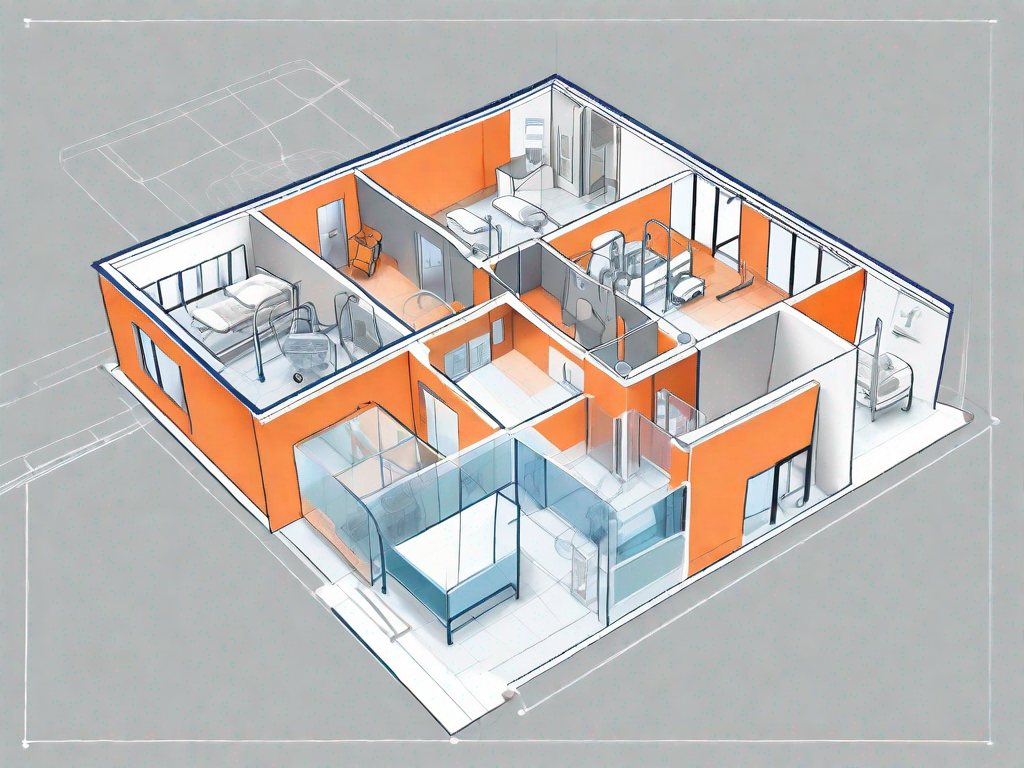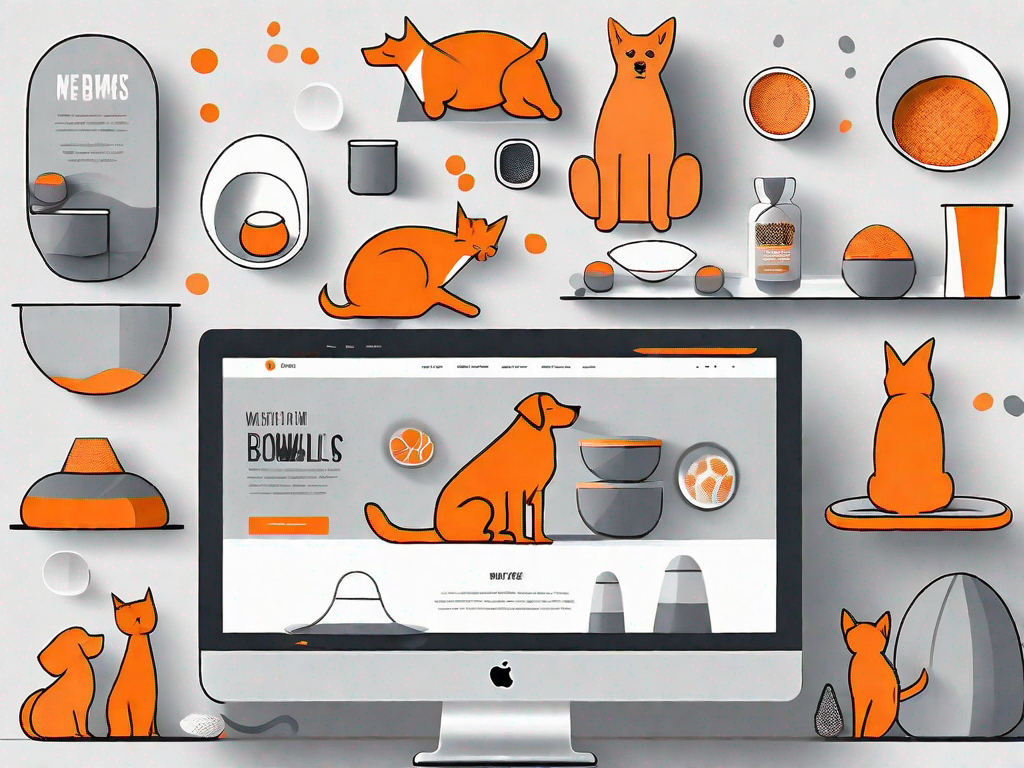.svg)
Creating a Design Strategy Template for Healthcare
.svg)

In today's rapidly evolving healthcare industry, the importance of design strategy cannot be overstated. It plays a crucial role in shaping patient experiences, improving outcomes, and driving overall success. By adopting a well-defined design strategy, healthcare organizations can create meaningful connections with patients, enhance the delivery of care, and ultimately improve the overall patient experience.
Understanding the Importance of Design Strategy in Healthcare
Design is no longer just about aesthetics; it is now a strategic approach that encompasses various aspects of healthcare. It involves the thoughtful integration of processes, systems, and environments to create user-centered solutions that meet the needs of patients and healthcare professionals alike. By leveraging design thinking principles, healthcare organizations can create spaces that promote healing, enable efficient workflows, and ultimately enhance patient outcomes.
In today's rapidly evolving healthcare landscape, the role of design has become more crucial than ever. Design is no longer limited to creating visually appealing spaces; it now encompasses the entire patient journey, from scheduling appointments to receiving care. It plays a pivotal role in creating environments that support positive patient experiences, reduce stress and anxiety, and foster trust and confidence in the healthcare system.
The Role of Design in Modern Healthcare
In modern healthcare, design goes beyond creating visually appealing spaces. It encompasses the entire patient journey, from scheduling appointments to receiving care. Design plays a pivotal role in creating environments that support positive patient experiences, reduce stress and anxiety, and foster trust and confidence in the healthcare system.
For example, when patients enter a healthcare facility, the design of the reception area can greatly impact their initial impression. A welcoming and well-organized space can help alleviate any anxiety they may have and set the tone for their entire visit. Similarly, the design of patient rooms can contribute to a sense of comfort and privacy, promoting healing and recovery.
Furthermore, design also plays a critical role in optimizing workflows and efficiency within healthcare organizations. By carefully considering the layout and arrangement of equipment, supplies, and workstations, design professionals can help streamline processes and reduce errors. This not only benefits healthcare professionals by enabling them to deliver care more effectively but also enhances patient safety and overall satisfaction.
Why a Design Strategy is Crucial for Healthcare
A well-defined design strategy is essential in healthcare because it provides a roadmap for delivering patient-centric care. It helps organizations align their goals, processes, and resources to create environments that prioritize patient safety, comfort, and satisfaction. Moreover, a cohesive design strategy can also improve operational efficiency, enhance staff morale, and attract top talent.
By investing in a comprehensive design strategy, healthcare organizations can create spaces that are not only aesthetically pleasing but also functional and purposeful. For instance, a well-designed waiting area can incorporate elements that promote relaxation and provide information to patients, reducing their anxiety and enhancing their overall experience.
Additionally, a design strategy that focuses on creating efficient workflows and optimized spaces can help healthcare professionals work more effectively. By considering the needs of different departments and specialties, design professionals can create layouts that minimize unnecessary movement and maximize collaboration.
Furthermore, a thoughtful design strategy can also have a positive impact on staff morale. By creating work environments that are comfortable, well-lit, and aesthetically pleasing, healthcare organizations can improve employee satisfaction and reduce burnout. This, in turn, can lead to better patient care and outcomes.
Lastly, a well-executed design strategy can help healthcare organizations attract and retain top talent. In an industry where competition for skilled professionals is fierce, offering a workplace that is not only technologically advanced but also visually appealing can be a significant advantage. A thoughtfully designed healthcare facility can convey a sense of professionalism, innovation, and commitment to quality care, making it an attractive option for healthcare professionals.
Key Elements of a Healthcare Design Strategy Template
When creating a design strategy template for healthcare, it is important to consider the key elements that ensure its success.
Healthcare design is a complex process that requires careful consideration of various factors. By incorporating these elements into the design strategy, healthcare organizations can create environments that promote healing, efficiency, and patient satisfaction.
Identifying the Core Components
The first step in creating a design strategy template is to identify the core components that need to be addressed. This includes factors such as the physical environment, technology integration, patient flow, and staff requirements.
The physical environment plays a crucial role in healthcare design. It encompasses everything from the layout of the facility to the choice of materials used. A well-designed physical environment can contribute to patient comfort, reduce stress, and enhance the overall healing experience.
Technology integration is another vital aspect of healthcare design. With advancements in medical technology, it is essential to incorporate the latest innovations into the design strategy. This includes considerations for electronic medical records, telehealth services, and smart devices that enhance patient care and improve workflow efficiency.
Patient flow is a critical factor in healthcare design. It involves the movement of patients throughout the facility, ensuring that they have easy access to necessary services while maintaining privacy and confidentiality. By carefully planning patient flow, healthcare organizations can optimize the delivery of care and minimize wait times.
Staff requirements are also an essential consideration in the design strategy. Healthcare facilities need to provide a conducive environment for healthcare professionals to deliver high-quality care. This includes considerations for workstations, storage space, and communication systems that facilitate collaboration and efficiency.
By understanding these elements, healthcare organizations can develop a design strategy that effectively addresses their unique needs.
Incorporating Patient-Centric Design
A patient-centric approach is a cornerstone of any successful healthcare design strategy. This involves understanding patients' needs, preferences, and expectations and incorporating them into the design process.
When designing healthcare facilities, it is crucial to consider the comfort and well-being of patients. This can be achieved by creating spaces that are welcoming, soothing, and aesthetically pleasing. Natural light, calming colors, and comfortable furniture are some elements that can contribute to a positive patient experience.
Empathy is another key aspect of patient-centric design. Healthcare organizations should strive to create environments that demonstrate compassion and understanding towards patients. This can be achieved through the inclusion of private spaces for sensitive conversations, family-friendly waiting areas, and clear signage that helps patients navigate the facility easily.
Supporting patients' emotional and psychological needs is also vital in healthcare design. Incorporating spaces for relaxation, reflection, and spiritual support can contribute to the overall well-being of patients. Artwork, gardens, and quiet areas can provide solace in times of stress and promote healing.
By putting patients at the center of the design strategy, healthcare organizations can create environments that are comforting, empathetic, and supportive.
Steps to Create a Design Strategy Template for Healthcare
To create an effective design strategy template for healthcare, organizations should follow a structured approach that encompasses several key steps.
Designing a healthcare environment that caters to the needs of patients and healthcare professionals requires careful planning and consideration. By following these steps, organizations can develop a design strategy that not only enhances the physical space but also improves the overall healthcare experience.
Defining Your Healthcare Design Objectives
The first step is to clearly define the objectives of your design strategy. This involves understanding the specific goals you want to achieve, such as improving patient satisfaction, enhancing efficiency, or optimizing patient flow. Defining these objectives will help guide the entire design process.
When defining your healthcare design objectives, it is essential to involve key stakeholders, including healthcare professionals, patients, and administrators. By gathering insights from these individuals, you can ensure that your design strategy aligns with their needs and expectations.
Conducting a Thorough Healthcare Design Research
A comprehensive research phase is crucial in creating a design strategy template. This involves gathering data, analyzing trends, and understanding best practices in healthcare design. By conducting thorough research, organizations can identify innovative solutions, learn from successful case studies, and develop a deep understanding of their target audience.
During the research phase, it is important to explore various aspects of healthcare design, including spatial planning, interior design, technology integration, and sustainability. By gaining a holistic understanding of these areas, organizations can create a design strategy that addresses the multifaceted needs of healthcare environments.
Developing a Prototype for Your Design Strategy
Once the research phase is complete, it is important to develop a prototype for your design strategy. This involves creating visual representations of your design concepts, conducting user testing, and refining your ideas based on feedback. By prototyping your design strategy, you can ensure that it meets the specific needs of your organization and your patients.
During the prototyping phase, it is crucial to involve end-users in the process. By soliciting feedback from healthcare professionals, patients, and other stakeholders, you can gather valuable insights that will help refine your design strategy. This iterative approach allows for continuous improvement and ensures that the final design meets the highest standards of quality and usability.
In conclusion, creating a design strategy template for healthcare requires a systematic approach that encompasses defining objectives, conducting thorough research, and developing prototypes. By following these steps, organizations can create healthcare environments that are not only aesthetically pleasing but also functional, efficient, and patient-centered.
Case Studies: Successful Design Strategy Templates in Healthcare
Examining successful case studies can provide valuable insights and inspiration for healthcare organizations looking to develop their own design strategy templates.
Case Study 1: Design Strategy in Hospital Management
In this case study, a hospital implemented a design strategy that focused on improving operational efficiency and patient experience. By redesigning patient flow, introducing technology-supported processes, and creating patient-centric spaces, the hospital achieved significant improvements in patient satisfaction and staff productivity.
Case Study 2: Patient Experience Design Strategy
In this case study, a healthcare organization prioritized patient experience by creating an immersive and welcoming environment. The design strategy incorporated elements such as nature-inspired aesthetics, interactive waiting areas, and innovative technology solutions. The organization witnessed an increase in patient satisfaction scores and a decrease in wait times.
Challenges and Solutions in Implementing a Healthcare Design Strategy
Implementing a design strategy in healthcare can come with its own set of challenges. However, with careful planning and consideration, these challenges can be overcome.
Common Obstacles in Healthcare Design Strategy Implementation
Some common obstacles include resistance to change, budget constraints, and the need to balance patient needs with regulatory requirements. These challenges can often be overcome with effective communication, stakeholder involvement, and a phased implementation approach.
Effective Solutions to Overcome Challenges
Effective solutions involve building a strong case for change, securing executive buy-in, and engaging all stakeholders in the design process. Additionally, seeking external expertise and leveraging technology can help address budget constraints and ensure compliance with regulations.
Creating a design strategy template for healthcare is an iterative process that requires careful planning, research, and collaboration. By investing in a comprehensive design strategy, healthcare organizations can enhance the experience for both patients and healthcare professionals, ultimately improving the overall quality of care.
Related Posts
Let's
Let’s discuss how we can bring reinvigorated value and purpose to your brand.







.svg)